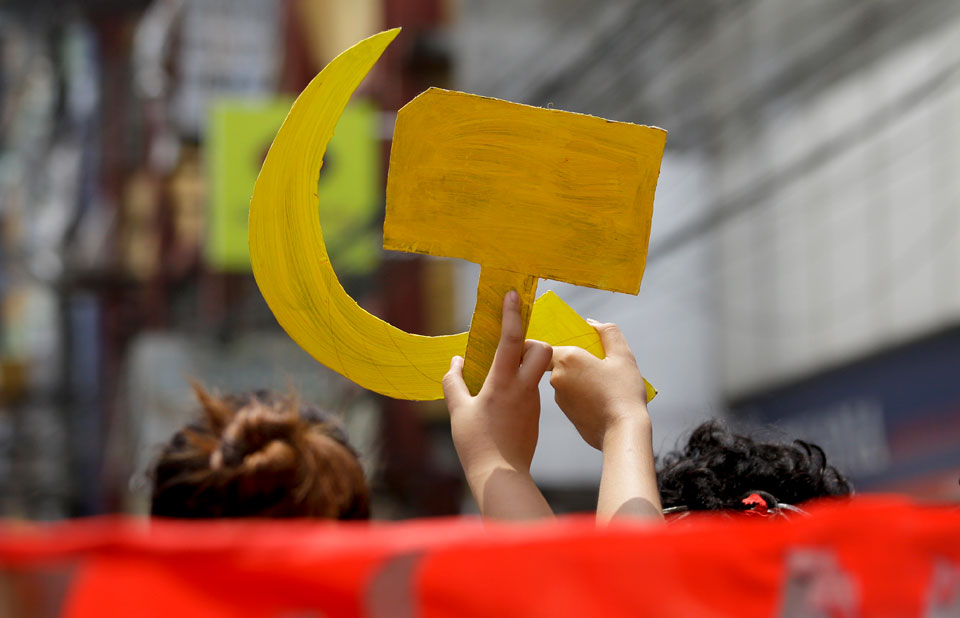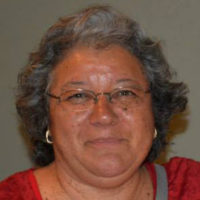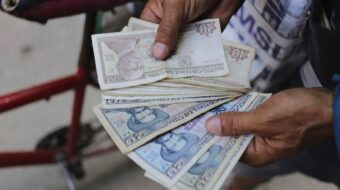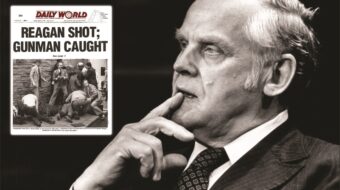
As an activist in my early 20s, I didn’t know much about what communism really was; all I’d heard was they were bad people that could hurt you and your loved ones. Being active in the Chicano student movement, I came across a member of MEChA (Movimiento Estudiantil Chicanx de Aztlán) who mentioned to me that the Communist Party USA was giving a class on Marxism and asked if I was interested in going.
On the first day, the teacher talked about why there were rich and poor people. He said the reason there were poor people is because those that own the manufacturing companies, businesses, and natural resources (the “means of production,” as I learned that afternoon) took advantage of those that worked for them by paying low wages while making lots of money selling the products workers made. As a simple example, he explained how it might cost a company $0.50 to make a pair of shoes, but it would then turn around and sell the pair for two, three, or more times that much. The raw materials were infused with the labor power of the workers to create new value. That new value was the source of profit. “That makes sense,” I thought to myself.
On the second day of class, the teacher explained how societies have changed over time. In early human society, in primitive communism, everyone shared what they had, but overall there was very little to go around. Facing scarcity, people were forced to learn how to domesticate animals and raise and keep them close by for food. During this period, some people were needed to help raise the livestock and work the land and thus slavery emerged—people began to be separated by class. Some started to control the surplus that was produced while others did the work of producing it. The conflict that arose from the horrible working conditions that slaves endured, however, grew to the point where they demanded change, and a feudal society surfaced. Slaves achieved some measure of freedom for themselves.
Under the new feudal system, landowners would charge others, serfs, to use the land they controlled in order to grow their food. Of course, the landowners charged more than the serfs could make to survive. The serfs began pushing for change, while in the cities a new class arose that no longer made its wealth from land, but rather from producing and selling other goods. That new group of merchants and manufacturers was what we have come to know as the capitalist class. Out of the conflict between the feudal lords and the rising capitalist class, a new system—capitalism—was born. And the people that moved from working the land into working in the new factories and other industries became the working class that most of us belong to today. As history seemed to unfold before me, I felt like all the pieces of a puzzle that had been floating in my head were coming together.
There was a science that could explain why these changes happened, how they were based on the inequality between people based on what position they held in the economy—based on which class they belonged to. It shined a light on the exploitation of one class by another, but it also showed that when an exploited class realizes its interests and acts together, it can overthrow the ruling class. If other exploited groups could do it, then so could workers. I thought, “Wow a scientific explanation, too!” I had renewed hope that a better society was possible and an understanding that it required organization to get there.
What I learned in those first few days was that we can build a better society, one where there are no poor people, one where we share our talents for the good of all. What I also learned was that those that have power will not give it up so easily. That they will do all they can to make you believe there is nothing you can do to change things, to get you to feel helpless and hopeless by telling you lies. Those lies included the things that I and many others had been told about communism.
In the 1950s, Communists were so demonized that it scared people; it brutalized families to the point that they were afraid to speak openly about the things that mattered. But why was this done? Because of the destruction of capitalism, colonialism, and imperialism, the ideas of Marx, Engels, and Lenin were catching on in so many parts of the world. People were looking for a change, and that made the capitalists fearful of losing their power. So they used whatever means they could to deceive and convince people into thinking that socialist and communist ideas were not for them.

It’s something their spokesmen in government are still doing today.
Sen. Lindsey Graham calling the group of progressive women of color lawmakers known as “The Squad”—which includes Reps. Ocasio-Cortez, Ilhan Omar, Ayanna Pressley, and Rashida Tlaib— communists is an attempt to try the same tactic used in the 1950s. Those in power will do anything they can to keep their billions, exploit workers, and keep them divided by having them fear and blame each other for inequalities. Whether it is anti-communism, racism, sexism, homophobia, or hatred of immigrants—the goal is the same.
These progressive members of Congress are speaking out and challenging injustice. Let’s not be deceived and brainwashed by this name-calling; we live in an era when we can readily read and learn what communism is and what it is not.
I am reminded of the words of Brazilian Archbishop Dom Hélder Câmara, who said, “When I give food to the poor, they call me a saint. When I ask why the poor have no food, they call me a communist.”
So, to Lindsey Graham, Donald Trump, and the rest, you can call me a communist, too. In this rich country, no one should be without food, housing, health care, education, jobs, and living wages, but too many don’t have them. We should demand to know why, and then, we should do something about it.












Comments